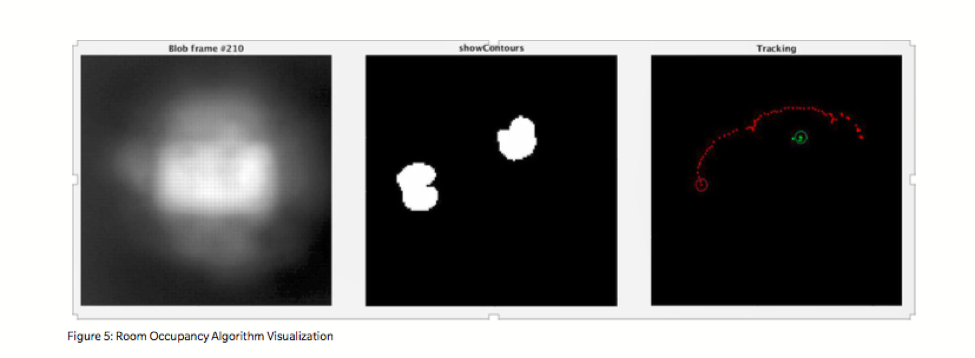Lensless smart sensors (LSS) are a novel method of sensing. The technology combines a standard CMOS sensor such as those found in focused and defocused cameras, but replaces the lens with an extremely small anti-phase binary diffractive grating. This grating sits in the optical path, with light passing through it intelligently spread onto the low-resolution CMOS sensing element below it.
LSS does not capture focused images. LSS also does not capture purposely de-focused images. Rather, it creates what is called the ‘blob’ domain, which is a series of point spread functions (PSF) of light. An example of a single PSF is shown in Figure 2.

A collection of PSFs (‘blob’ domain) is shown in Figure 3, demonstrating the native output of the LSS sensor. For room occupancy applications, Rambus uses multiple apertures on the sensor.

For example, Figure 3, which was captured using the POD 2.0 LSS demonstration system, employs two apertures. Figure 4 is a focused image (taken with a mobile phone) of the scene the LSS sensor captured in Figure 3.

While the blob data from Figure 3 may appear to be a meaningless light pattern, it is in fact all the light from the scene captured through the LSS grating. Using custom-designed sensing algorithms (a visualization is provided in Figure 5, though not of the same scene), LSS can detect and isolate motion within specific areas of the FOV and identify the number of occupants and their locations. This is accomplished without ever forming a human- recognizable image anywhere in the processing chain.

Clearly, lensless smart sensors address the real-world privacy issues that focused and defocused cameras are burdened with. LSS technology captures scenes at very low resolutions, sometimes as low as 320 x 320 pixels. Although methods do exist to (somewhat) reconstruct images from native LSS blob data, the quality of the reconstruction is far below that of even the lowest quality focusing camera.
Additionally, the reverse engineering effort would be substantial and rely heavily on source LSS design data which Rambus does not publicly disclose. Perhaps most importantly, all processing can and should be executed at the local sensor level, with blob data never outputted or saved. These steps further reduce the level of privacy risks, making LSS a viable solution that can be deployed in both public and private smart buildings.
Interested in learning more about LSS? You can check out our eBook on the subject here and our lensless smart sensor product page here.

